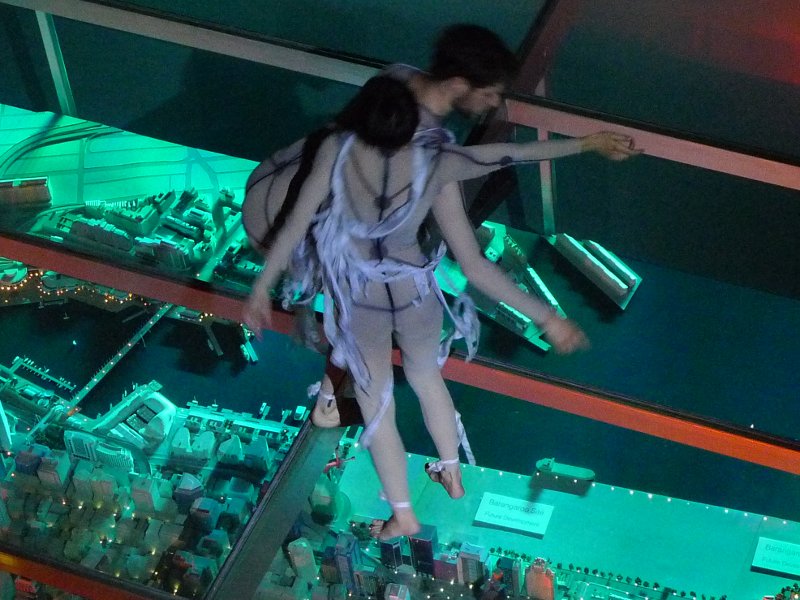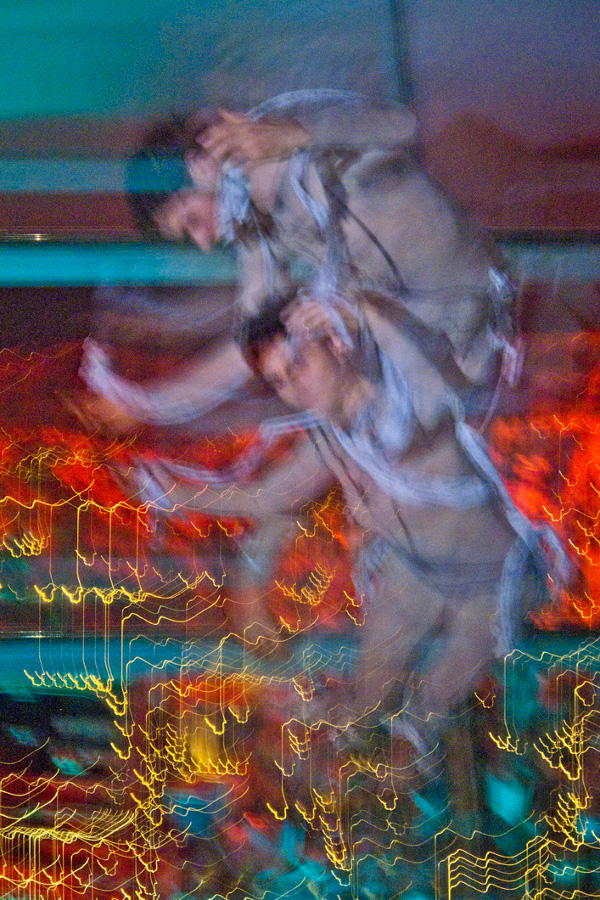Living Data
Science Art & Talks
The experiential process of observation and reflection is key to art and science
and is an essential component in understanding interdependence
of all species and ecosystems, terrestrial and aquatic.
Paul Fletcher Animator
Science Art & Talks
Living Data Program for the 2013 Ultimo Science Festival, Sydney, September 12-21.
Contact Video projection of dance by Caterina Mocciola in Oceanic Living Data animation by Lisa Roberts
We know that life evolves in response to changing conditions and that we can easily forget this in our urban cultures.
Contact Improvisation is a practice whereby a new dance evolves in response to changing conditions between people and the environment.
Improvised dance is performed to raise awareness of our interconnections.

Caterina Mocciola and Ashley Macqueen in the video performance installation Oceanic Sydney by Caterina Mocciola and Lisa Roberts, 2012. Photo by Yvette Worboys

Caterina Mocciola and Ashley Macqueen in the video performance installation Oceanic Sydney by Caterina Mocciola and Lisa Roberts, 2012. Photo by Paul Swagger
As an independent dancer and choreographer, my contemporary dance practice is grounded in Contact Improvisation, through which embodied responses shape my real-time choreography. I consider my engagement with climate change science filtered through my collaboration with Lisa Roberts. It can be described as an incidental encounter that had its origins in Lisa's investigation into human responses to climate change. My engageent with the science expanded into a series of cross-disciplinary performances with the intention of making scientific data available in more accessible way. Oceanic Sydney, Associate Event of Arts and About Festival 2012, was the culmination of this process. It presented to a general audience an immersive experience of animated scientific data and human gestures, with the immediacy of live dance and music. These expressions of understanding are combined to convey their messages through the collective imagination.
To evaluate how reciprocity works in Living Data and how our program could be improved, I ask contributors,
What do you most value about our work?
What have you contributed?
How have you benefited?
How could our program be improved?
Caterina Mocciola, Dancer/Choreographer, Australia
What do you most value about our work?
I value the vision mission of using the arts as a medium to make people aware of scientific data that otherwise would be hidden and not understood by the general public, which includes myself. I value the transparency and the passion behind the project leader. And I particularly value the collaborative nature of the project, where there is leadership that is however expressed via a non-hierarchical style of collaboration. I believe that this particular choice around how collaboration is embraced in itself is the strength and the success of the project itself as it offers freedom of expression, of opinions and points of view that make the project and the consequential delivery of the message stronger and more powerful.
What have you contributed?
I've contributed with a few dance performances and installations, following the vision of the project while staying true to my artistic practice. I also have contributed with co-creating a performance that offered exposure to broader audience, outside of the academic context. As the performance was presented within an artistic context it allowed for a different demographic to get engaged with Living Data, with an immersive interdisciplinary experience of music/dance/animations that cohesively succeeded in engaging the audience while allowing to reflect on the immediacy of the matter on our everyday lives.
How have you benefited?
The benefits that I have gained are the experience itself of a successful, non-hierarchical collaborative style that has become the model that I am using for my current collaborations. I have gained knowledge around climate change that otherwise it would have been out of my reach.
I had the opportunity of applying my artistic practice to support a message I believe in, while placing a stronger focus on content rather than form.
And it has been an important opportunity to showcase my work.
How could the Living Data program be improved?











